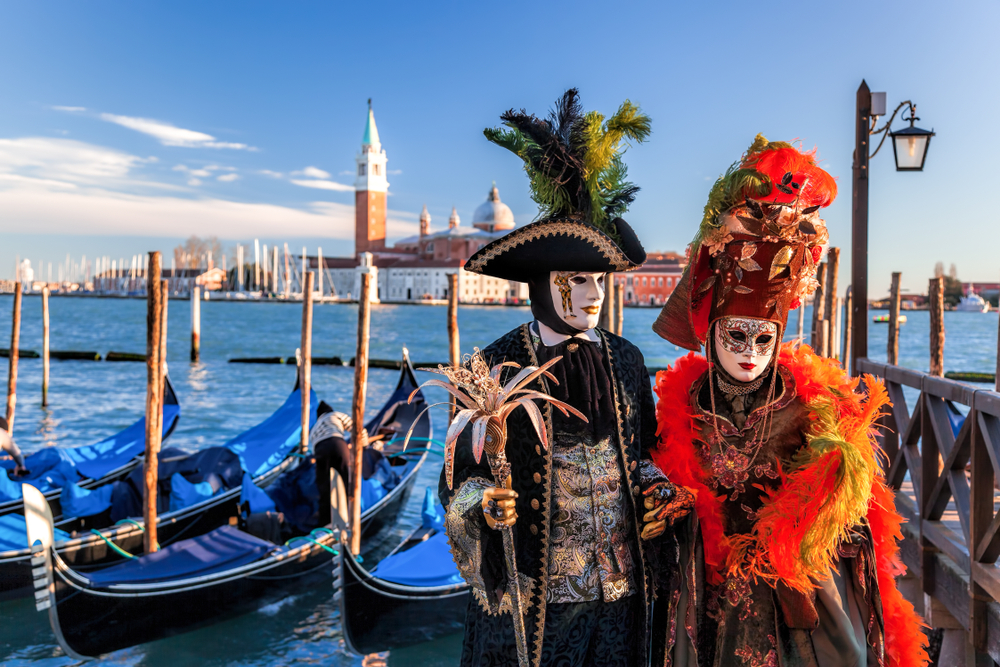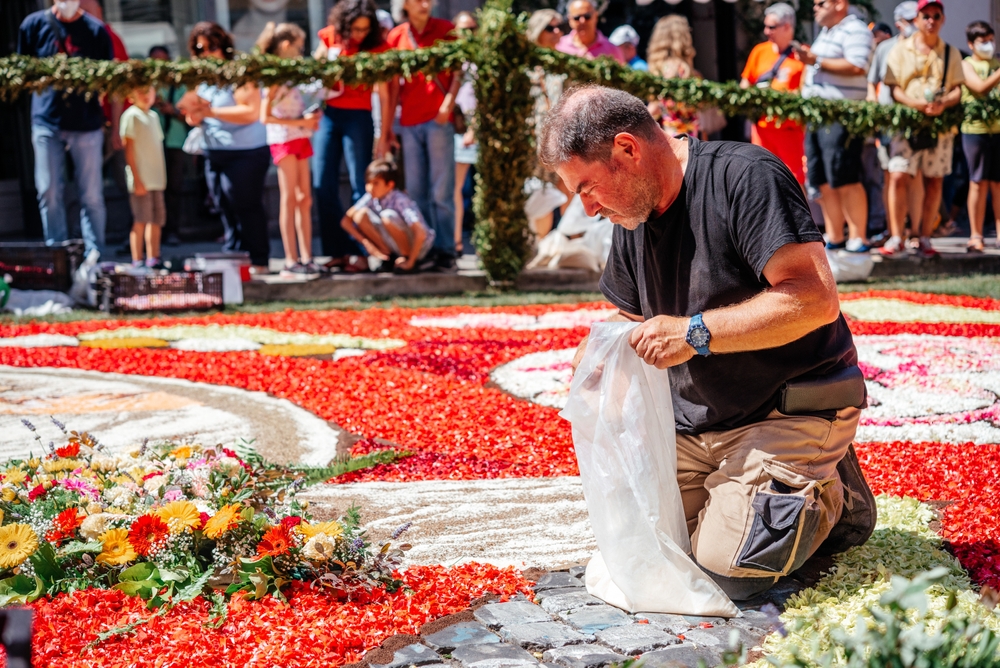Holidays and Festivals: Holiday Calendar

Calendar
| Holiday | 2024 | 2025 | 2026 | Affected |
| New Year's Day (Capo d’ anno) | Jan. 1 | Jan. 1 | Jan. 1 | g, b, o, r |
| Epiphany | Jan. 6 | Jan. 6 | Jan. 6 | g, b, o, r |
| Easter Sunday (Pasqua) | March 31 | April 20 | April 5 | none |
| Easter Monday (Pasquetta) | April 1 | April 21 | April 6 | g, b, o, r |
| Liberation Day (Festa della Resistenza) | April 25 | April 25 | April 25 | g, b, o, r |
| Labor Day (Festa dei Lavoratori) | May 1 | May 1 | May 1 | g, b, o, r |
| Anniversary of the Republic | June 2 | June 2 | June 2 | g, b, o, r |
| Assumption Day (Ferragosto) | Aug. 15 | Aug. 15 | Aug. 15 | g, b, o, r |
| All Saints' Day (Tutti I Santi) | Nov. 1 | Nov. 1 | Nov. 1 | g, b, o, r |
| Immaculate Conception Day | Dec. 8 | Dec. 8 | Dec. 8 | g, b, o, r |
| Christmas Day (Natale) | Dec. 25 | Dec. 25 | Dec. 25 | g, b, o, r |
| St. Stephen’s Day | Dec. 26 | Dec. 26 | Dec. 26 | g, b, o, r |
Note: Holidays that fall on weekends are often moved to the following Monday.
Key:
g = government offices and institutions
b = banks and financial institutions
o = non-retail businesses/offices
r = retail businesses
Carnival
Date(s):
Sunday, Monday, and Tuesday preceding Ash Wednesday, usually in February and/or March
Closures:
None
Description:
Carnival marks the last few days before the season of Lent begins on Ash Wednesday. The festivities start several days before and end on Fat Tuesday, the day before Ash Wednesday. Italy is known for its Carnival celebrations in Venice, Viareggio, Ivrea, Cento, Gambettola, Satriano, and Acireale.
Background:
Venice's Carnival dates to 1268 and is world-famous for its elaborate masks. After becoming part of the Austrian-held Kingdom of Lombardy-Venetia when Napoleon signed the Treaty of Campo Formio, Carnival celebrations halted. It wasn't until the 1970s that the founding of a modern mask shop revived the traditions of Carnival in Venice.
How Celebrated:
Carnival is a time of merrymaking rife with street parties, wild costumes, feasting, and dancing. Traditional carnival foods include fritole and crostoli (fritters), which are available in shops throughout the city. Carnival highlights in Venice take place on the weekends.
Flower Festival (Infiorata)
Date(s):
Varies annually during May and/or June
Closures:
None
Description:
Flower festival in honor of the feast of Corpus Domini (Corpus Christi).
Background:
The tradition of laying out a carpet of flowers for the procession of the Holy Eucharist on the feast of Corpus Christi dates back to 1625. It was initiated by the head of the papal nursery at the Vatican, Benedetto Drei, as a means of enhancing the celebration. In June 1778, the brothers Arcangelo and Nicola Leofreddi followed the tradition in their hometown of Genzano, a medieval town near Rome. More than 200 years later, Genzano has become world renowned for its Flower Festival (Infiorata) and, along the way, has earned the honor of being described in the works of Lord Byron, Goethe, and Hans Christian Andersen. The festival also is featured in a one-act Danish Ballet by Bournonville. The art of "flower painting" is passed on from generation to generation in Genzano families.
How Celebrated:
Days before the festival, Genzano artists pick approximately 50,000 kilograms (about 110,000 pounds) of flowers, separate the petals, sort them according to color, and store them in cool places to prevent them from wilting. Later, they draw chalk patterns of religious themes, floral designs, and other creative renditions on the length and breadth of the main road. They transform the 250-meter (820-foot) long street into an amazing, colorful, intricately designed soft carpet of flowers fit for a King. The following Monday, children may run freely down the street to trample on the flower carpet and ruin the designs that had been painstakingly prepared a few days before.
Luminara and Regatta of San Ranieri
Date(s):
June 16–17
Closures:
None
Description:
A feast day for the patron saint of Pisa, Saint Ranieri.
Background:
The lighting of oil lamps has been a tradition in Pisa since the 17th century and became exclusively tied in with the feast day of St. Ranieri when the saint’s remains were moved to the Chapel of the Crowned Virgin in the Pisa Cathedral in 1688. The regatta has been a tradition on Saint Ranieri’s feast day since 1718.
How Celebrated:
Thousands of tourists and locals descend on Pisa to witness the spectacle in honor of the town’s patron saint. On the eve of his feast day, over 70,000 lumini (small candles) in biancheria (glass holders with wooden frames) are lit, outlining the town’s buildings, bridges, and towers, including the famous Leaning Tower of Pisa and structures along the Arno river. Lumini also float on the river, and locals place candles on their window ledges, balconies, and rooftops. Bonfires and fireworks displays at the Citadella Vecchia cap the evening’s festivities. The following day, June 17, on St. Ranieri’s feast day, a historic regatta takes place. Four boat teams, each from a different district in Pisa, join the competition. The winners are awarded prizes such as oxen or sheep, and the last team to finish receives a prize of geese to the jeers of the crowd.
The Guard of Saint Constantine (L’Ardia di San Costantino)
Date(s):
Early July
Closures:
None
Description:
Unique horse race in Sedilo, Sardinia.
Background:
In 312 CE, Constantine was victorious in a war against Maxentius. On the eve of a battle at the Mulvian Bridge, Constantine reported a vision of a flaming cross inscribed with the words "in this sign thou shalt conquer." He instructed his men to paint the cross on their shields, and they won the battle.
How Celebrated:
Each year at Sanctuario di San Costantino, Constantine’s charge and associated historic events are staged. The riders gather here the night before, where they receive blessings from the priest and a speech from the mayor. Once the crowd settles, the horses and riders begin their charge, led by someone representing Constantine and several other riders, representing his flag bearers. Upon reaching the sanctuary, the riders slow down to pass the gate seven times, except for Constantine, who only passes the gate six times, each time receiving a blessing from the priest. Constantine continues to the end of the race at the dry fountain, followed by the rest of the band, where a great feast awaits them. Suckling pig roasted in wood-fired ovens is a favorite delicacy, downed with vernaccia (local wine) drunk in shared glasses. The race takes place again the next morning.
Copyright © 1993—2024 World Trade Press. All rights reserved.

 Italy
Italy 


